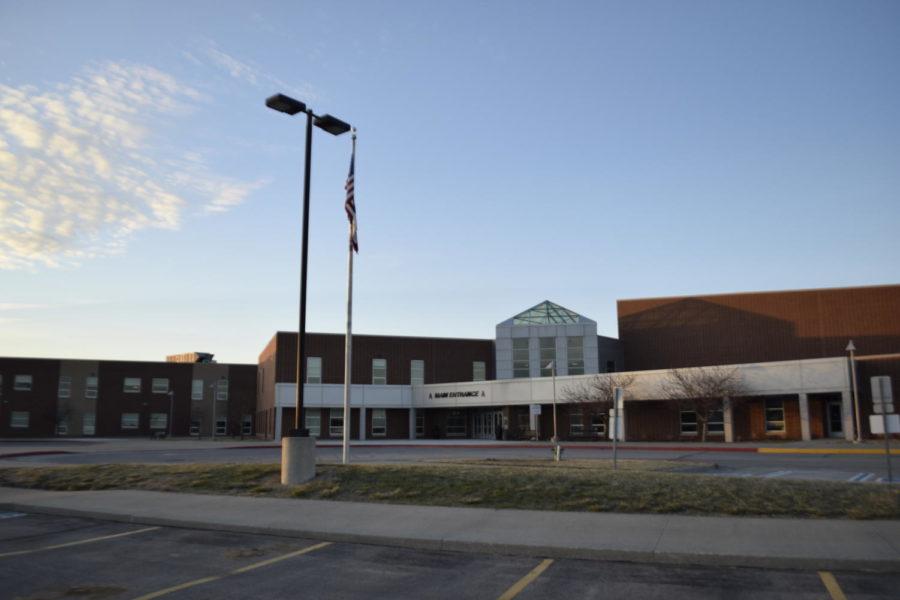- App Content
- App Content / News
- News
- News / Politics And Administration
- News / Politics And Administration / City
Achievement gap affects vulnerable students in Ames
March 20, 2017
When Angela Shaw enrolled her daughter in the Ames Community School District after moving from Texas to Iowa, she was an exceptional student. Shaw’s daughter came from one of Texas’ “magnet schools,” a private school focused on fine arts. She was considered a “gifted and talented” student.
But when she started attending Ames schools in fourth grade, she began to struggle with math, a subject she had never had problems with before. By the time she started high school, Shaw’s daughter was below the school’s standards, meaning she had to take additional tutorial classes. Classes she felt were unhelpful and unnecessary.
“When she came into the Ames school system in fourth grade, all of her academics were on a six- and seventh-grade level,” Shaw said. “This is a high-achieving student that has been stereotyped through the system.”
But Shaw’s story isn’t unique. As an African-American student, Shaw’s daughter is part of a demographic that is vulnerable in school systems throughout the nation.
This kind of racial gap didn’t come to the forefront of Ames schools until the 2016 Iowa School Report Card brought to light a major problem in Ames Middle School: an achievement gap as high as 30 percent.
The gap affects African-American students the most but also hurts Latino students, students with a low socioeconomic status and students who have special learning needs.
Lewis Rosser, an Ames school board director who serves on the Diversity Advocacy Committee, said the issue goes far beyond the middle school.
“It’s not exclusive to the middle school,” Rosser said. “It’s not like all the sudden the kids show up and something happens or they leave there and problem solved,” Rosser said. “The gap begins in the latter years of elementary and then, of course, continues in high school. Although some of the data shows it does improve in high school, or the gap lessens.”
The Iowa School Report Card uses the Iowa Assessment Test to compare how students are achieving from a year-to-year basis. It is the only test that the Iowa Report Card looks at, and Rosser said it has some flaws.
“There is a racial basis involved in any test,” Rosser said. “And that’s been proven in research for decades now in our country. And they’ve been working on getting those racial biases taken care of, but they do exist. So we can’t ignore that. We also can’t ignore the fact that it’s just one test.”
But the data surrounding the achievement gap in Ames Middle School goes back many years. What really raised red flags to Rosser, and other members of the Board and community, was the consistency in which the gap was widening.
The administration did try to take some steps forward. Last November, the Ames School Board worked with the Story County Attorney to create a program targeting truancy. For many, however, focusing on attendance as the board’s first public action was a misstep.
Monic Behnken, professor of sociology at Iowa State and a candidate for the Ames Community School Board, said that issues with attendance aren’t the problem, they’re a result.
“Addressing attendance is not going to fix the things that were existing and making it difficult to be successful in this environment years earlier,” Behnken said. “I would also say that problems with attendance are also the result of things that have been troubling our children years earlier. What I see is people putting effort and energy into the product of the problem.”
Rosser also disagreed with the board’s initial approach addressing attendance, saying that it put up a barrier between parents and the school and that it blamed the victims, rather than the system at fault.
Instead, Behnken recommends the development of a “concerted coordinated professional development program” that can help teachers understand the sort of problems that vulnerable students face.
“What needs to happen needs to happen in the reverse,” Behnken said. “You understand the problems start in preschool, but we have to have a consistent response through preschool into high school.”
She also said that the Ames School District and school districts around the nation need a “complete and total redesign” of the disciplinary system that doesn’t include school separation techniques like suspension.
But the Ames School District is trying to move forward. Rosser said the administration at Ames Middle School is developing a professional development program that seeks to help teachers understand the unique problems that some students face. The program was slated to begin this year but was delayed because of weather.
“It was going to be a district-wide professional development day with an expert coming to speak with them on this issue,” Rosser said. “Right now the district is looking to reschedule it for later this school year.”
Rosser, Behnken and Shaw all noted that this gap was not the fault of the teachers, rather it is a systematic problem that school districts around the nation face.
“This is a structural issue,” Behnken said. “This is not a failing of the teachers in the Ames Community School District. I want that message to be exceedingly clear.”
















